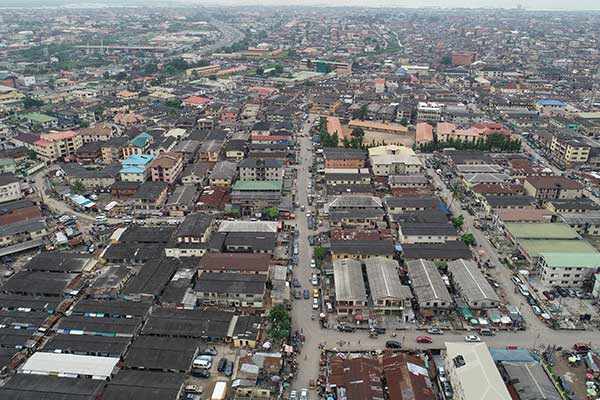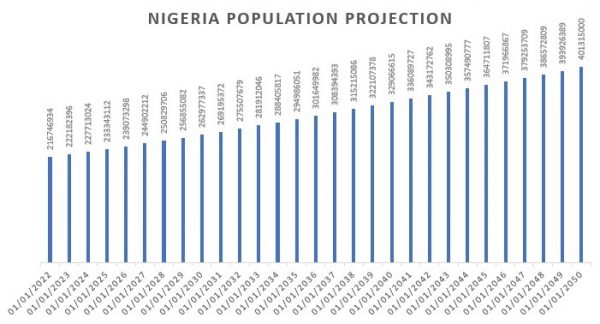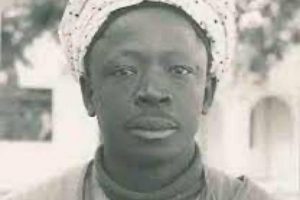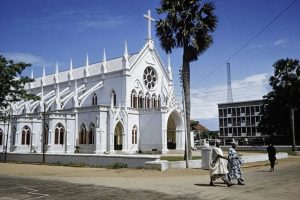Nigeria Population – Past, Present and Future
Posted by Timige, On 27 Nov, 2021 | Updated On 27 Nov, 2021 No Comments »

Nigeria population is one of the most disputed topic among Nigerians both home and abroad. The reason being that Nigerians do not trust census process by the government. There is a lot of conspiracy flying around about the system Nigeria government use in counting Nigerians. This conspiracy is being peddle around among the southern Nigerians who believe that population of southern Nigeria supposed to be bigger than that of northern Nigeria.
Nigerians believe that all previous population censuses in Nigeria have been spoilt with challenges. And that there have been political incentive to inflate population figures. These challenges ranged from staffing and logistical shortages to undue political interference and manipulation. Controversies and disputes have always followed every population counting process. All other sources of demographic data, government’s administrative records, births record and deaths record, are also not trusted by Nigerians.
History of Nigeria Population Census
Census during Colonial Era
The first Nigeria population census took place in 1911. It covered tiny part of the country.
The second census was done in 1921. It was nation-wide unlike the first one that covered small part of the country. Inadequate staffing and public boycott rendered the census ineffective. The people boycotted the census because they thought it would prompt government to levy higher taxes. In Southern Nigeria, the initial population figures were modified upwards and result of 8.4 million was announced. Northern Nigeria was announced as 10.4 million in population.
Nigeria 1931 census was spoiled by a locust invasion and tax riots.
Second World War prevented Nigeria government from conducting 1941 census.
1952/1953 population census was the last conducted in colonial era. Nigeria population was counted to be 30.4 million. This figure was used as yardstick for political representation in Nigeria parliament in arrangement for 1960 independence. The population of the Northern Nigeria was 55.4% of the total, Eastern Nigeria was counted as 23.7% and that of the Western Region, including Lagos (Nigeria capital) and the Mid-West, 20.9%. So the parliament seats were assigned, before independence, according to these percentages with 174 seats for Northern Nigeria, 73 seats for Eastern Nigeria and 65 seats for Western Nigeria (including Lagos and Mid-West).
Post-Colonial Censuses in Nigeria
The first Nigeria population census after independence was conducted in May 1962 by the Federal Census Office of Ministry of Economic Development. It was organised and conducted better than censuses before independence but the interim figure of 45.1 million showed that the population of Western and Eastern Nigeria combined was higher than Northern Region population. This was debated especially from political perspective.
Government annulled the 1962 census and another population counting was organised in 1963. The management of Federal Census Office was also sacked from the Federal Office of Statistics. This marked the beginning of direct political interference in the Nigeria census process.
A special Census Board was created with increased number of staff and more resources for the 1963 census. The result gave 55.7 million as the population of Nigeria. This was about 11 million more than the 1962 population.
This resulted in a slight redistribution of political power in favour of Western Nigeria. The Mid-West and Eastern Nigeria lost five parliament seats.
The changes in number of parliament seats caused serious criticism of the 1963 population census results. Politico-linguistic rivalry grew till it exploded in the civil war of 1967-70. The wat destroyed much of the South East. The Biafra war started military rule in Nigeria.
79.8 million was recorded as Nigeria population in the 1973 census. The census said North made 64.4%. This led to another serious controversy.
In 1989, military founded National Population Commission to organise the 1991 census. This was done in preparation for the taking over of civilian government. This led to political tension as people believed that the census figure would be used to manipulate the upcoming elections. So, the military government doused people’s tension by announcing that the census figures would not be used for the election.
The board of the National Population commission consisted of seven professionals who have no political party affiliation. Nigeria was divided into census zones. Each zone was a combination of states. And each professional member of the commission was responsible for one census zone. The military government did this to reduced the incentive to inflate population figures.
Adequate maps were produced for the 1991 census. The maps were used for the 250,000 enumeration areas. Census equipment and processes were also tested in advance. These made 1991 census one of the most organized in Nigeria.
The result of 1991 census was 88.5 million. It was much lower than estimates based on the inflated 1963 census.
2006 census was the most recent in Nigeria. Nigerians believed that plagued by political interference from the planning to execution. The census counted Nigeria population as 140 million. The results were disproved and concerned Nigerians went to court.
Population Figure in Chronological Order
1911 – *** , result was not published as it covered only tiny part of the country.
1921 – 18.8 million, 1921 census was the first nation-wide population counting in Nigeria. 8.4 million for South and 10.4 million for North.
1952/1953 – 30.4 million, 1952/1953 census was used to share parliament seats in preparation for independence.
1962 – 45.1 million, 1962 census was the first post-colonial census after independence. It was cancelled.
1963 – 55.7 million, 1963 census brewed a huge tension and was one one the factors that lead to Nigeria civil war.
1973 – 79.8 million, 1973 census said North had 64.4% of Nigeria population. It created serious controversy.
1991 – 88.5 million, 1991 census was believed to be the most organised.
2006 – 140 million, 2006 census is the last in Nigeria. It was seriously disputed and people went to court.
Current, Projection and Growth Rate of Nigeria Population
Nigeria population have been growing from year to year. The rate grew from 1.49% in 1951 to 3.08% in 1978. The growth rate dropped from 3.08% in 1978 to 2.54% in 2000.
3.08% growth rate of 1978 has been the highest.
According to United Nation, the growth rate has become relatively stable with 2021 estimated to be 2.25% as compared to 2.24% of year 2000.
The current Nigeria population is estimated as 211,400,708.

It is projected that the population will continue to increase at lower rate. The rate will fall from 2.21% in 2021 to 1.88% in 2050. The population of Nigeria is expected to be 401,315,000 by 2050.
| Year | Population | Growth Rate |
|---|---|---|
| 2022 | 216746934 | 2.53 |
| 2023 | 222182396 | 2.51 |
| 2024 | 227713024 | 2.49 |
| 2025 | 233343112 | 2.47 |
| 2026 | 239073298 | 2.46 |
| 2027 | 244902212 | 2.44 |
| 2028 | 250829706 | 2.42 |
| 2029 | 256855082 | 2.40 |
| 2030 | 262977337 | 2.38 |
| 2031 | 269195372 | 2.36 |
| 2032 | 275507679 | 2.34 |
| 2033 | 281912046 | 2.32 |
| 2034 | 288405817 | 2.30 |
| 2035 | 294986051 | 2.28 |
| 2036 | 301649982 | 2.26 |
| 2037 | 308394393 | 2.24 |
| 2038 | 315215086 | 2.21 |
| 2039 | 322107378 | 2.19 |
| 2040 | 329066615 | 2.16 |
| 2041 | 336089727 | 2.13 |
| 2042 | 343172762 | 2.11 |
| 2043 | 350308995 | 2.08 |
| 2044 | 357490777 | 2.05 |
| 2045 | 364711807 | 2.02 |
| 2046 | 371966867 | 1.99 |
| 2047 | 379253709 | 1.96 |
| 2048 | 386572809 | 1.93 |
| 2049 | 393926389 | 1.90 |
| 2050 | 401315000 | 1.88 |
Do you have question or opinion about this post? Make it in the comment below.
Please Share with Your Friends/Followers
Get Current with Nigeria, Subscribe Now!
Related Posts
Previous Post: « Tobiloba Kehinde,Third Defendant Pleads Guilty for his Role in Nigerian Romance Scam in Oklahoma, USA
Next Post: Racism – Long History of Black People in Ireland by Jess Majekodunmi »
- This Nigeria World Post is Tagged with:
- Nigeria History |
- Nigeria population |
- Nigerian world











Leave a Reply